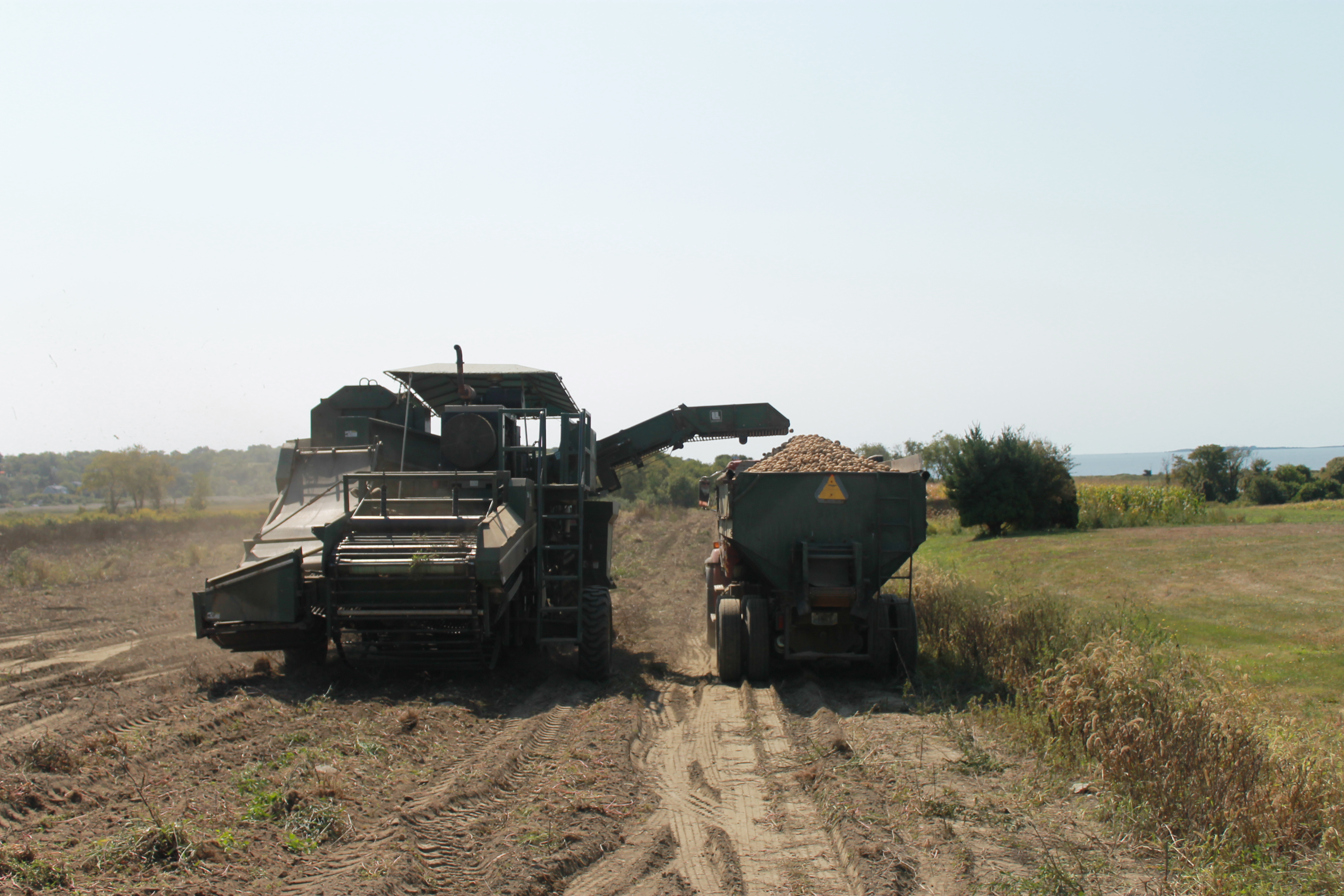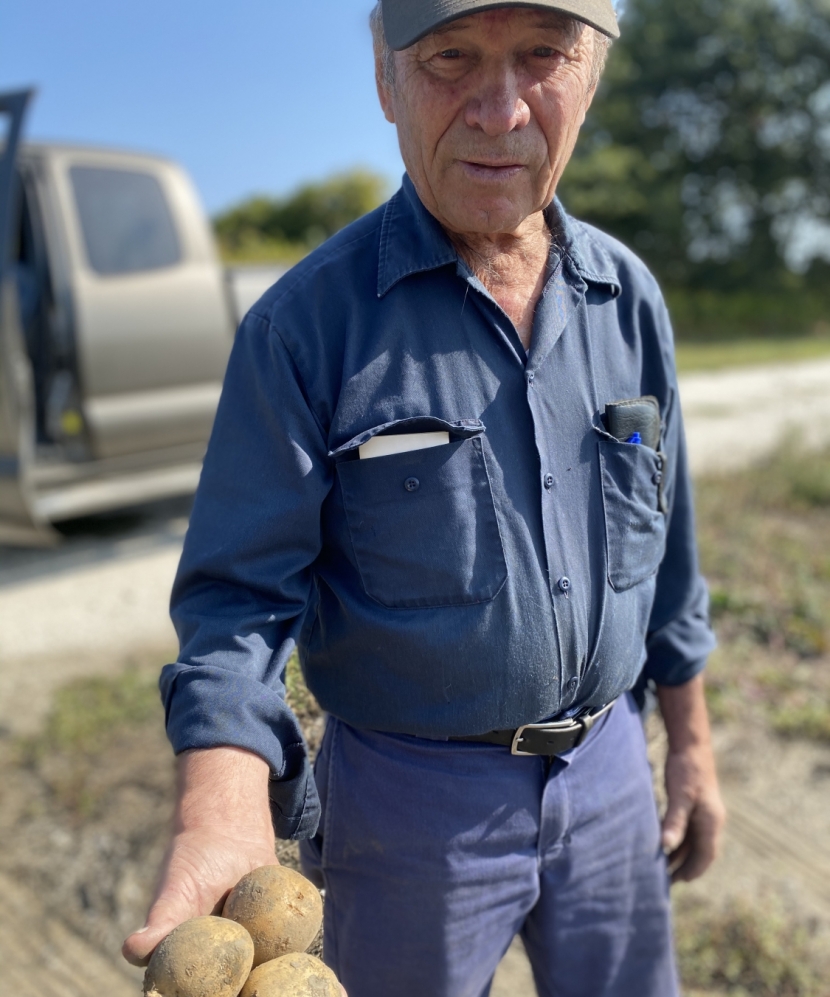Drought Spells Disaster for Local Farms
USDA’s Drought Designation Funding Offers Some Relief
Jason “Pete” Peckham picks up a few Waneta potatoes from the field that was tilled yesterday at his fifth-generation Ferolbink Farms in Tiverton. He inspects them for imperfections, size and how they compare to last year’s crop. They are smaller than before, he laments, and there aren’t as many. He can hold three easily in his palm now, whereas with last summer’s seven inches of rain, two hefty spuds dominated his hand.
After the spring pandemic increased consumer demand for local produce like Peckham’s potatoes and butternut squash, the summer brought no such love for Rhode Island’s farms. The lack of rain during the past three months generated a drought that decimated local producers and is jeopardizing 2021 forecasts. Though supplemental United States Department of Agriculture (USDA) funding could stay loan payments and spur technology growth, farmers remain in limbo.
“Virtually all agriculture in Rhode Island has been adversely impacted by drought,” says W. Michael Sullivan, executive director of USDA’s Farm Service Agency in Warwick. “If you look at vegetable farmers, the drought has dramatically increased their cost. Even if they had irrigation capacity, some ran out [of water]. So, their crop quantity and quality has been adversely impacted.
“As a farmer, I have seen drought,” Sullivan says, “but I have never seen drought and heat and disease come together like [it has this year].”
The USDA reports dry soils and very poor pastures across 90% to 100% of Rhode Island, and more than 10 consecutive weeks of drought here since July 1. By Peckham’s measure, they had barely two inches of precipitation all summer, which has led to increased irrigation costs, early layoffs of seasonal workers, premature final harvests and devastating consequences for his business.
“In 2019, with the wet season, quality wasn’t great but production was big. We had a million pounds in storage that lasted until March,” Peckham recalls. “This year it’s the total opposite. The quality is good but the quantity isn’t. … We’re losing quite a bit of money. We have to make some tough decisions in the next few months.”
A few years ago, fields of his popular white potatoes stretched across 275 acres here on the state’s largest farm, but demand and weather have impacted Peckham’s prime crop, and now they sow just 140 acres. Back in 2008, they harvested seven million pounds of four varieties. But he planted 20% less seed this spring due to the pandemic, and those potatoes and squash that grew were smaller or misshapen due to drought, reducing his harvest by another 20%. Add to that decreased orders from his major client, a Providence–based processor that supplies many universities, and Peckham is down almost 60%.
“I’ve been doing this since I was 15, and I never remember a year like this,” says Peckham, who turned 81 in September. “We never had a perfect year. But it’s like living in Arizona now.”
“We started out with a cold, wet spring, which set the plants late germinating,” says Henry Wright, owner of Wright Hill Farm in West Greenwich and president of the Rhode Island Farm Bureau. “Strawberry crop was a couple weeks late, which hurt. On the other hand, that extra couple weeks was needed to get everything in order after pandemic reopening. It went from that to too dry, too hot. And most pathogens and fungus thrive on super-hot weather, which is not good.
“It was even too hot for corn to grow properly, and the number one setback was loss of rain,” Wright continued. “Now it’s all the way down to the wells, brooks are not running, farm reservoirs have gone dry, groundwater is gone. This has been an extremely fast drought.”
Irrigation wasn’t the perfect answer either, Sullivan says, because some farmers lack the necessary equipment and budgets to supply sufficient water. Peckham has irrigated as much as he can, offering 1½ inches of water three times during the season, but it did little good. The soil remains so dry he couldn’t plant cover crops, like oats in August and rye in September, which is common farming practice in the off-season to control erosion, maintain soil structure and provide habitat for beneficial crop pollinators. If heavy rains come in the winter without those cover crops to hold soil in place, it could all wash away.
One measurable effect is the narrowing of the market, Sullivan says. Ten years ago, Peckham sold 80% of his potatoes to Frito-Lay to be made into potato chips, but a drought-stricken crop makes dark chips, which aren’t consumers’ favorite, Sullivan says. So, the potatoes might be discounted to less than it costs to produce them, which makes it not worth the effort.
“Because a farmer is a scientist and artist, they have to look at what’s their market, where can they use technology and how to afford it, then get it together in a timely fashion,” Sullivan says. “Even the best of farmers will be impacted by this.”
Because so much imperfect produce had to be abandoned in Peckham’s fields, he enlisted the help of Hope’s Harvest to mobilize volunteers to glean unsellable vegetables to donate to food pantries. He’s never needed this service before, and now it’s a salvation. Sullivan encourages the agriculture community to apply for USDA’s drought designation funding, which could help with technology and financial assistance. Now aware of the program, Peckham plans to pursue funding.
“Their ability to manage their land under these kinds of conditions is inspirational to me,” Sullivan says. “My advice would be this: You’re not alone, don’t be afraid to reach out for support. My team and I will go anywhere, any time to help.”
###
Resources:







